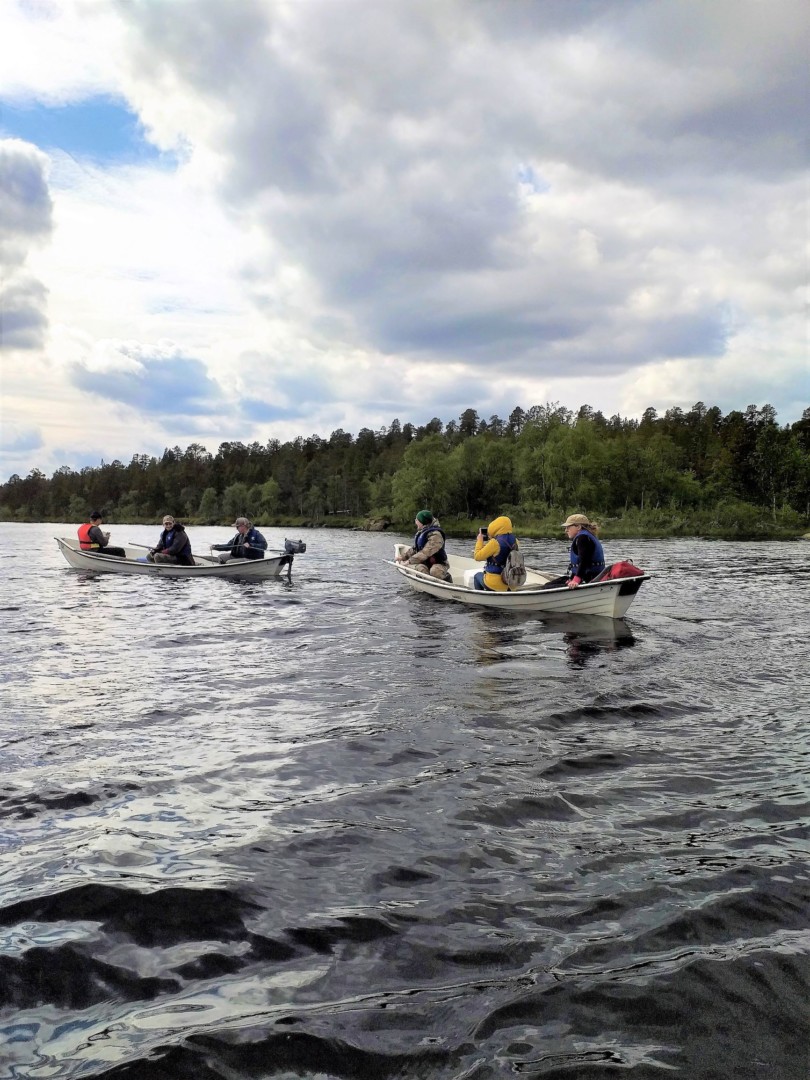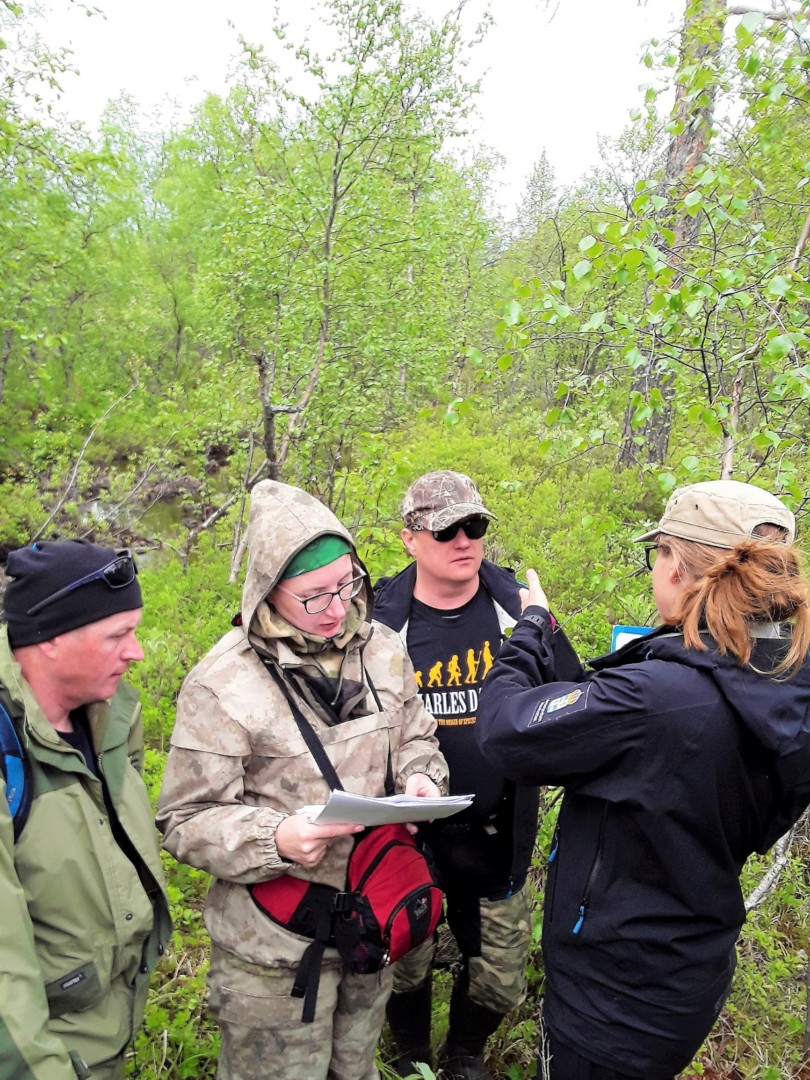Ecological Restoration of Arctic Rivers means demanding field work

PHOTO: The project staff is starting their 3 km ride over the lake Menesjärvi, in Finnish Lapland.
Eleven biologists, ichthyologists, geographists, IT-technologists, are climbing onto boats in Menesjärvi, Finnish Lapland, at 9 on a July morning. They are going to do mapping of the biotopes on River Menesjoki. The sun has been up all night, so there is no darkness to limit the working hours.
The tour over the lake Menesjärvi is about 3 kilometres. On the other side, they are going to walk along the river Menesjoki. This is not the first time that biologist Marko Kangas does this, along a riverside in Lapland. “But you never know how long a way we are going to get forward during one day. That remains to be seen” he says.
Despite the unpredictability of the day, his expectations seem positive and the same applies for the rest of the group. They do it now and then, some days of the year, and this time their work is part of project Ecological restoration of Arctic Rivers (Re Arc).
Rivers have served the development of modern societies
The project works for getting a number of arctic rivers back to their natural state. In all parts of the world, Man has always modified the water flow in rivers. River flow has been channelized because of timber floating. Forests and agricultural land has been drained. Construction of a road or railway crossing a river may have meant a change in the water flow. This has in many cases led to migration barriers for many aquatic species, nutrients and heavy metals released from the ground to the river, and erosion of the ground.
All this has a negative effect on river biodiversity.
Ecological restoration has been done before in various parts of the world. ReArc is the first time when Finland, Sweden, Russia and Norway cooperate in this. Many of the watercourses of the area are border-crossing, and they have similarities in terms of biotopes, vegetation, land types, fauna / species etc. A big part of this first workshop of ReArc is exchanging experiences in the topic. And of course, like in almost all cross border cooperation projects, it takes at least some time to synchronize the meanings of concepts, e.g. professional “glossaries” of the four countries.

PHOTO: Gennadi Dmitrenko and Natalia Polikarpova from Pechenga Eco Centre, and Magnus Johansson and Emma Palmgren from the County Administrative Board of Norrbotten are participating in mapping the river Menesjoki.
This is not decorating, or environmental art
This is not decorating a fish tank. You can not just put rocks there, sand here, according to what looks nice, and the fish would be happy. The restoration work needs careful planning. This group of experts need to map numero
us things starting with the biotopes, original width, land type, flow ratio, waterbed substrates – to mention just a few examples of the features of each section of the watercourse. Different man-made structures have to b
e mapped as well. The aim is to find out the state of sections of the river before human beings interrupted in the natural flow of it. It could happen that the mapping results also benefit some other project. So it is good to pay attention to all details – now that the group has travelled this far.
After planning it is time for actions
During the mapping, the experts prepare to make recommendations for actions: What would be the best measures in each place to get the river resemble its original state, and to remove the barriers for fish mi
gration and spawning. The project will carry out part of the restoration activities on some of the rivers included in the project. This starts in year 2020. Also, much remains to be done for future restoration projects.
Text and Photo: Marjaana Lahdenranta


